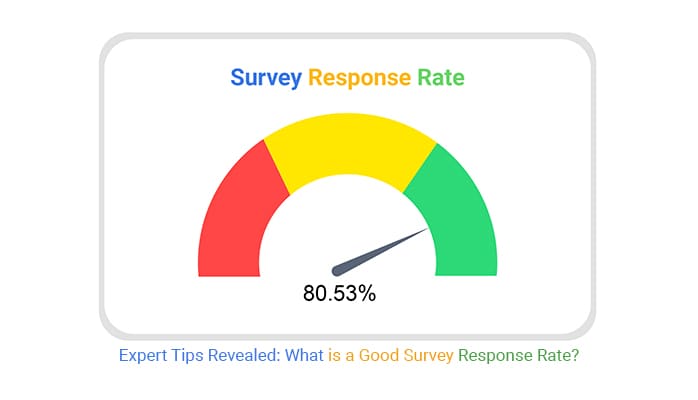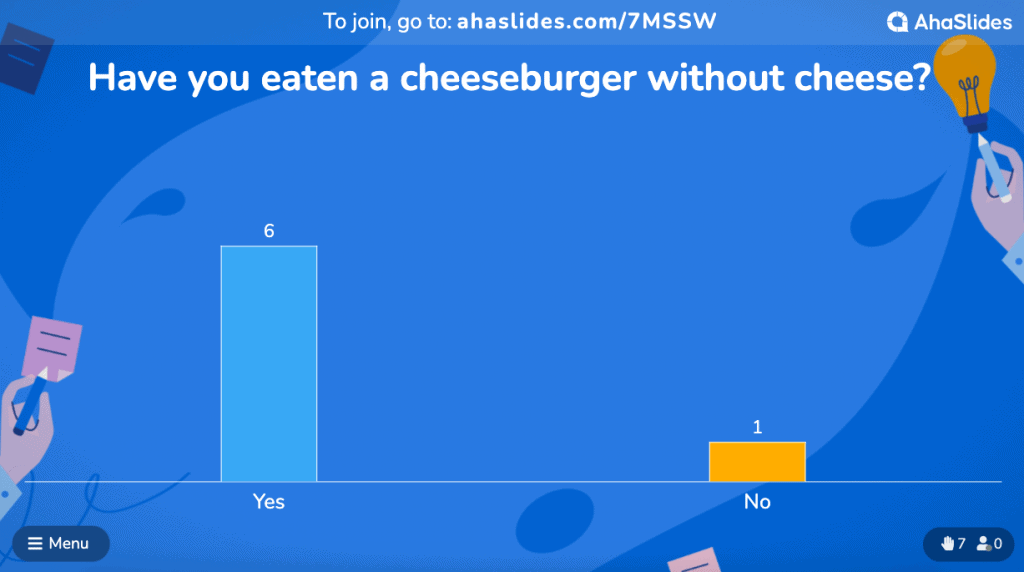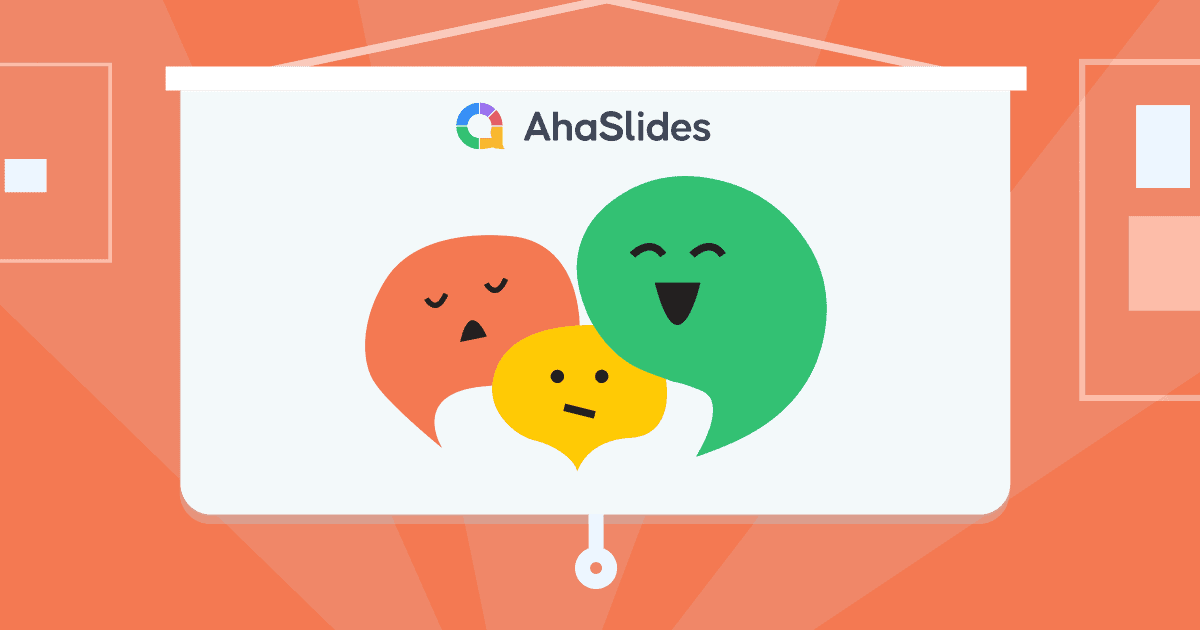Hi, let us know your thoughts…*hover to the ‘trash icon’* -> *delete it* … with a ‘Ahhh another survey’…
You know it’s business as usual when people see this email headline and delete it or move it to the spam folder instantly, and it’s not their fault.
They receive dozens of emails asking for their opinions like this every day. They don’t see what’s in it for them, nor the point of completing them.
It’s quite a hassle, especially when you’re an energetic team that’s spent so much time and effort crafting the survey, just to realize no one’s taking it.
But don’t feel down; your effort won’t go to waste if you try these 6 ways to drastically improve survey response rates! Let’s see if we can get your rates to jump up to 30%!
Table of Contents
Tips to measure, recommended by AhaSlides
Utilizing a clear rating system allows you to effectively measure crowd engagement and performance during presentations or activities. Check out Aha solutions, to gain effective survey results!
AhaSlides Rating Scale: This versatile tool allows you to design close-ended questions with customizable scales. Gather valuable feedback by having respondents rate attributes on a continuum that aligns with your criteria.
An ordinal scale is a type of measurement that allows you to rank or order data points. It tells you in what order things fall, but not necessarily by how much. Grab more ideas with 10 ordinal scale examples from AhaSlides today!
A Likert scale is a type of ordinal scale commonly used in surveys and questionnaires to measure respondents’ attitudes, opinions, or level of agreement on a particular topic. It presents a series of statements or questions and asks respondents to choose the option that best reflects their level of agreement or disagreement. Learn more with 40 Likert scale examples from AhaSlides!
AhaSlides AI Online Quiz Creator | Make Quizzes Live in 2024

Get to know your mates better!
Use quiz and games on AhaSlides to create fun and interactive survey, to gather public opinions at work, in class or during small gathering
🚀 Create Free Survey☁️
What is Survey Response Rates?
A survey response rate is the percentage of people who have fully completed your survey. You can calculate your survey response rate by dividing the number of participants who completed your survey by the total number of surveys sent, then multiplying that by 100.
For example, if you send your survey to 500 people and 90 of them fill it out, then it will be calculated as (90/500) x 100 = 18%.
What is a Good Survey Response Rate?

Good survey response rates typically range from 5% to 30%. However, that number depends on a lot of different factors, such as:
- The survey methods: are you conducting surveys in person, sending emails, making phone calls, having pop-ups on your website? Did you know in-person surveys take the lead as the most effective channel with a 57% response rate, while in-app surveys get the worst at 13%?
- The survey itself: a survey which takes time and effort to complete, or one that talks about sensitive topics might get fewer responses than usual.
- The respondents: people will be more likely to take your survey if they know you and can identify with the topic of your survey. On the other hand, if you reach out to the wrong target audience, such as asking unmarried people about their thoughts on a nappy brand, you’re not gonna get the survey response rate you want.
6 Ways to Improve a Survey Response Rate
The higher your survey response rate is, the better the insights you get… Here’s the need-to-know guide on how to boost them🚀
🎉 Spark engagement with random teams! Use a random team generator to create fair and dynamic groups for your next brainstorming activities!
#1 – Pick The Right Channel
Why keep spamming your Gen-Z audience with phone calls when they prefer texting on SMS?
Not knowing who your target audience is and what channels they are most active on is a grave mistake for any survey campaign.
Here’s a tip – try a few rounds of group brainstorming to come up with answers to these questions:
- What’s the purpose of the survey?
- Who is the target audience? Is it customers who’ve just tried out your product, your event attendee, the students in your class, etc.?
- What’s the best survey format? Will it be a personal interview, email survey, online poll, or mixed?
- Is it the appropriate time to send the survey?

#2 – Keep It Short
Nobody likes looking at a wall of text with overly-complicated questions. Break those chunks into small, tiny itty cookie bites that are easy to swallow.
Show the respondents how long it will take them to finish. An ideal survey would take under 10 minutes to complete – that means you should aim for 10 or fewer questions.
Displaying the number of remaining questions is helpful to increase the completion rate as people usually like to know how many questions are left to answer.
Easy to use measure, suitable for all types of meetings could be using close-ended questions and rating scale!
#3 – Personalise Your Invitation
Right when your audience see an ambiguous, general email heading asking them to do a survey, it will go straight into their spam box.
After all, nobody can assure you’re a legit company and not a fishy scammer who tries to hack into my super rare collection of Dumbledore’s sassy moments😰
Start building your trust with your audience and your email provider by adding more personal touches to your surveys, like including the names of respondents or changing the wording to express your authenticity and appreciation. See the example below:
- ❌ Hi, we would like to know what you think about our product.
- ✅ Hi Leah, I’m Andy from AhaSlides. I would like to know what you think about our product.
#4 – Offer Incentives
Nothing engages better than a small prize to reward the participants for completing your survey.
You don’t have to make the prize extravagant to win them over, just make sure it’s relevant to them. You can’t give a teenager a dishwasher discount voucher, right?
Tips: Include a prize wheel spinner in your survey to get maximum engagement from the participants.
#5 – Reach Out on Social Media
With more than half of the earth’s population using social media, it comes as no surprise that they are a great help when you want to push your survey game to the next level💪.
Facebook, Twitter, LinkedIn, etc., all offer countless ways to reach your target audience.
Running a survey about reality shows? Maybe movie fanatic groups such as Movie Lover Fans is where you should head to. Want to hear feedback from professionals within your industry? LinkedIn groups can help you with that.
As long as you’ve well defined your target audience, you’re set to go.
#6 – Build your Own Research Panel
Many organisations have their own research panels of pre-selected respondents who answer surveys voluntarily, especially when they’re serving niche and specific purposes such as scientific research that will run for a few years.
A research panel will help lower your project’s overall cost in the long run, save you time from having to find a target audience out in the field, and guarantee high response rates. It also helps when asking for intrusive personal information such as the participants’ home addresses.
However, this method will be unsuitable if your survey demographic changes with each project.
Survey Response Rate Types
Check out: The top fun survey questions in 2024!
If you’ve laid out all the ingredients to make a wonderlicious meal, but lack salt and pepper, your audience won’t be tempted to try it!
It’s the same with how you craft your survey questions. The wording and response types you choose matter, and coincidentally we’ve got a few types that should be included in your list👇, to improve the survey response rate!
#1 – Multiple Choice Questions
Multiple choice questions let the respondents choose from a range of options. They can pick one or many of the choices that apply to them.
Though multiple-choice questions are known for their convenience, they can limit responses and cause bias in the survey result. If the answers you provide are not what the respondents are looking for, they’ll pick something at random, which will harm your survey outcome.
A solution to fix this would be pairing this with an open-ended question right after, so the respondent can have more room to express themself.
Multiple choice questions examples
- You chose our product because (select all that apply):
It’s easy to use | It has a modern design | It allows me to collaborate with others | It satisfies all the needs I have | It has an excellent customer service | It’s budget-friendly
- What issue do you think we should resolve this week? (pick only one):
The team’s spiking burnout rate | Unclear task description | New members are not catching up | Too many meetings
#2 – Open Ended questions
Open-ended questions are the kinds of questions that require the respondents to answer with their own opinions. They’re not easy to quantify, and need the brains to work a bit, but they are there to help the audience to open up on a subject and give out their true, unrestricted feelings.
Without context, most people tend to skip open-ended questions or give trivial answers, so it’s best to put them after closed-ended questions, like multiple-choice, as a means to explore the respondents’ choices better.
Open-ended questions examples:
- Thinking about our session today, what areas do you think we could do better?
- How are you feeling today?
- If you could change anything on our website, what would it be?
#3 – Likert Scale Questions
If you want to know what people think or feel about multiple aspects of the same thing, then Likert scale questions are what you should aim for. They generally come in 3, 5, or 10-point scales, with a neutral midpoint.
Like any other scale, you can get biased results from Likert scales as people tend to avoid choosing the most extreme responses in favour of neutrality.
Likert scale questions examples:
- How satisfied are you with our product updates?
- Very Satisfied
- Somewhat Satisfied
- Neutral
- Dissatisfied
- Very dissatisfied
- Eating breakfast is important.
- Strongly agree
- Agree
- Neutral
- Disagree
- Strongly Disagree
Learn more: Setting Up Employee Satisfaction Survey
#4 – Ranking Questions
These questions ask the respondents to order answer choices according to their preference. You will understand more about each choice’s popularity and the audience’s perception towards it.
However, make sure that people are well-acquainted with every answer you give since they won’t be able to compare them accurately if they’re unfamiliar with some of the choices.
Ranking questions examples:
- Rank the following subjects in order of preference – 1 being your most preferred and 5 being your least preferred:
- Art
- Science
- Maths
- Literature
- Biology
- When attending a talkshow, what factors do you think would engage you the most? Please rank the importance of the following – 1 being the most important and 5 being the least important:
- The guest speaker’s profile
- The content of the talk
- The venue
- The synergy between the host and the guest speakers
- Additional materials provided (slides, booklets, keynotes, etc.)
#5 – Yes or No Questions
Your respondents can only choose either yes or no for this type of question so they are a bit of a no-brainer. They let people feel the ease of answering and usually don’t require more than 5 seconds to ponder.
Like multiple-choice questions, the yes or no ones don’t allow much flexibility in the replies, but they are a great help to narrow down the topic or target demographic. Use them at the beginning of your survey to omit any undesired responses.
Yes or no questions examples:
- Do you live in Nebraska, US? Yes/No
- Are you a high school graduate? Yes/No
- Are you a member of the British royal family? Yes/No
- Have you eaten a cheeseburger without cheese? Yes/No

Frequently Asked Questions
Is 40% a good survey response rate?
With the online survey response rate averaging as 44.1%, having a 40% survey response rate is a bit lower than the average. We recommend you work on perfecting the survey with different tactics above to drastically improve people’s responses.
What is a good response rate for a survey?
A good survey response rate generally ranges around 40% depending on industries and methods of delivery.
Which survey method results in the worst response rate?
Surveys sent by mail post have the worst response rate and, thus, are not a recommended survey method by marketers and researchers.




